In only three years, the Houston’s Day For Night has established itself as the most photo-worthy festival in the world. Perusing the #dayfornight Instagram tag after the festival yielded 43,832 posts. For comparison, searching #freepresssummerfest, a summer festival put on by the same people as Day For Night, calls up a mere 8,590 pictures. The majority of these Day For Night social media brags aren’t the typical blurry musicians or festival outfit shots either. Instead, the Day For Night posts center around the art that takes place around the music—the colorful, shimmering, mostly camera-ready light installations.
Those pieces, not the festival’s winter scheduling, is what has set Day For Night apart from other Texas music festivals, in no small part because they are primed for social media. But this year, the installations—which were mostly upstairs in the old Barbara Jordan Post Office and ran continuously over the course of two days—went beyond FOMO-inducing and made a true run for an audience that might skip the music altogether.
Here’s what we saw:
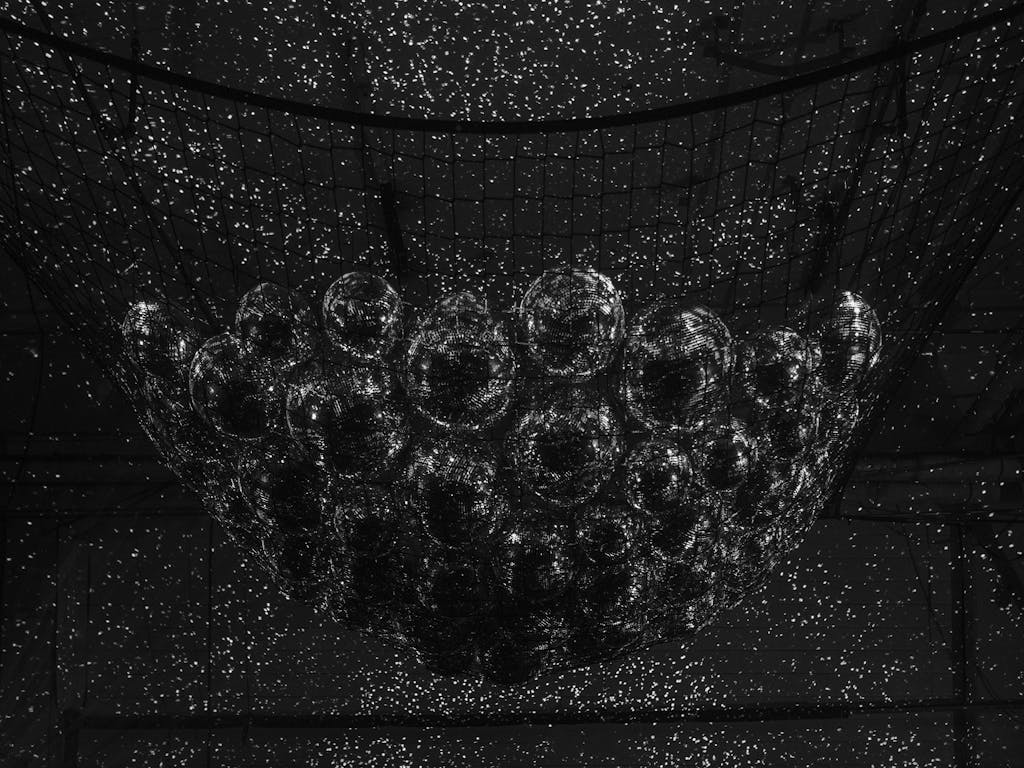
Sure, there were the crowd-pleasers that any Instagram user in Texas likely had a hard time avoiding over the weekend. Kyle McDonald and Jonas Jongejan’s Light Leaks, which was made by reflecting controlled light off of eighty disco balls dangling in a net attached to the ceiling, had a steady crowd of stragglers standing beneath the thousands of points of light and snapping photos.
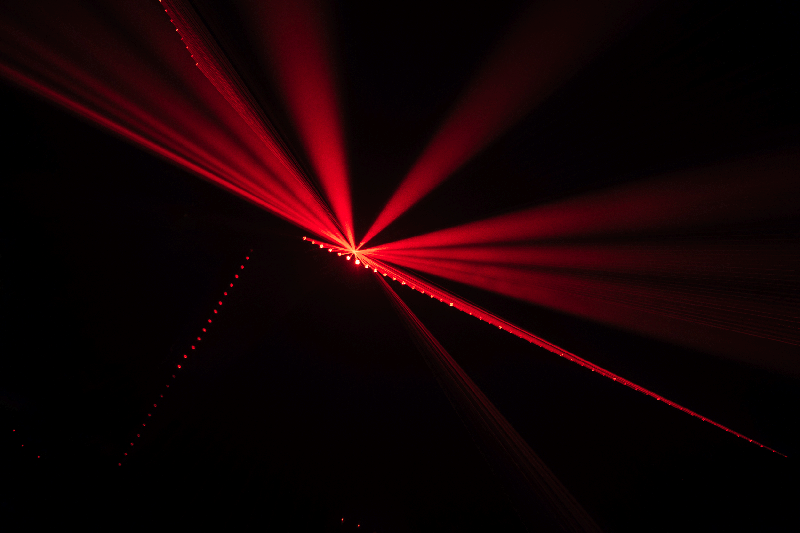
Crowds also passed through red beams to sit under Matthew Schreiber’s Ricochet. Many people began to interact with the multi-tiered pyramid by putting their fingers in front of the beams (and Instagramming, of course).
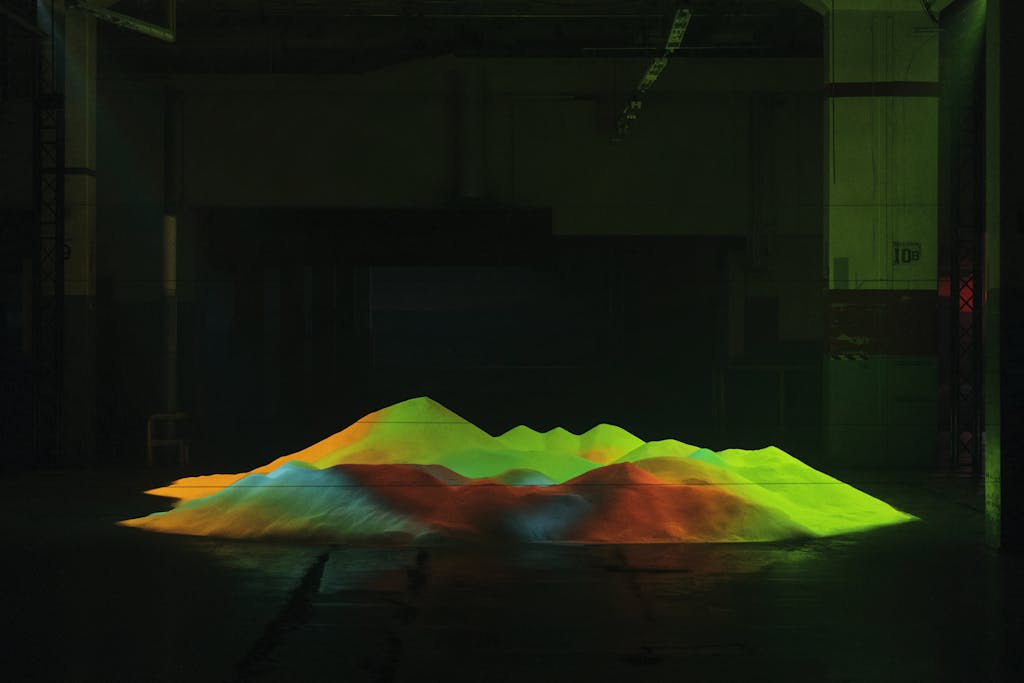
Those pieces were stunning, but other equally fascinating pieces likely weren’t found on an Instagram feed. Gust, by Parisian sculptor Theodore Fivel, created an eerie desert-scape with lights—constantly shifting color and shape—that synced with music.
And some of the most powerful pieces, similarly hard to capture on even the best of camera phones, centered around a theme that’s top of mind for Houston right now: the power of water. At first glance, Rice University lecturer Lina Dib’s Threshold seemed to be a looping video of Surfside Beach at sunset. But as attendees approached the projection, the image liquified, and, as more people gathered, the color saturated—set off by coding from Dib’s collaborator Taylor Knapps and motion sensors.
Surfside is a special place to Dib, who spent summers fishing there with her family and taught her little brother to drive on the beach. Her piece, she hopes, inspired conversation about the the natural spaces we inhabit. “I have to think twice, even when I’m shooting this piece, about what I’m putting into my body when I go diving into this water, and it’s so beautiful,” she says.
It’s a very contradictory feeling to feel repulsed and completely drawn into this space. How do we find a sense of agency in our relationships to these natural systems when everything seems above us and this unfathomable force of nature, and also this unfathomable mess that we’ve created? I think in allowing people to interact with the environment in this piece that it’s our world and we can shape it.”
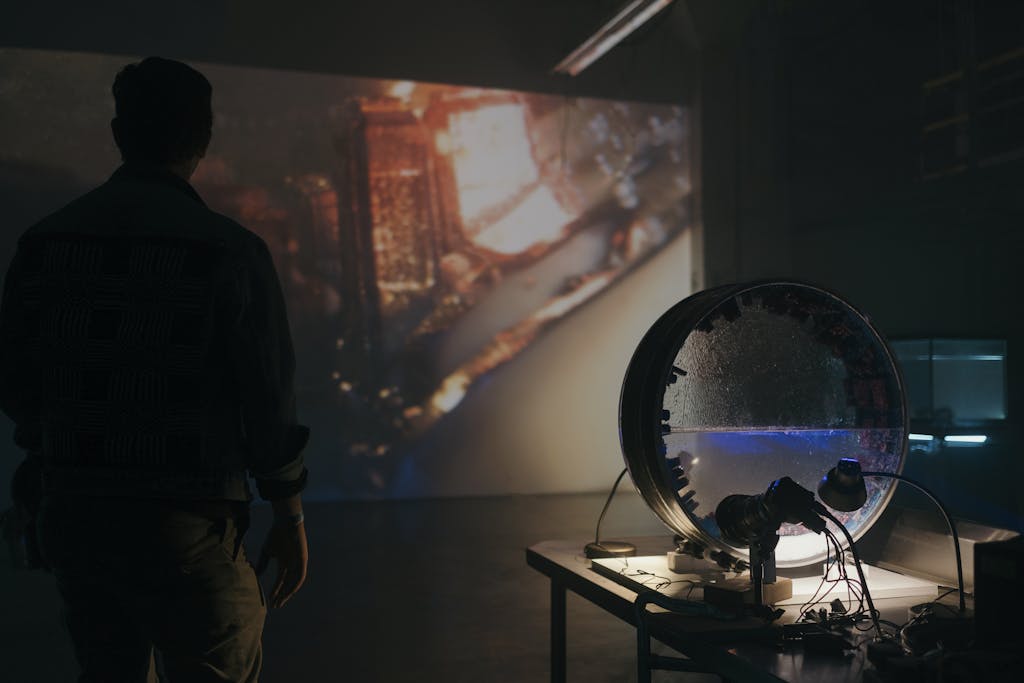
The New Sublime by James Clar might not have used Houston as an inspiration, in fact, the 3D-printed cityscape, which was projected onto a screen with “water” (actually computer coolant) crashing around it in a perpetual circle, was purposefully meant to be anonymous. Still, his intended effect—complete with aquariums full of crabs flanking the projector—is something familiar to Houstonians. “It’s like the finale of a movie, but the finale of a movie that never ends,” Clar says. “Sublime is when you’re in awe of nature. It could be beauty awe, or sunset awe, or it could be awe of destruction and earthquakes. I’m trying to create this video system that shows this never ending scene of destruction.”
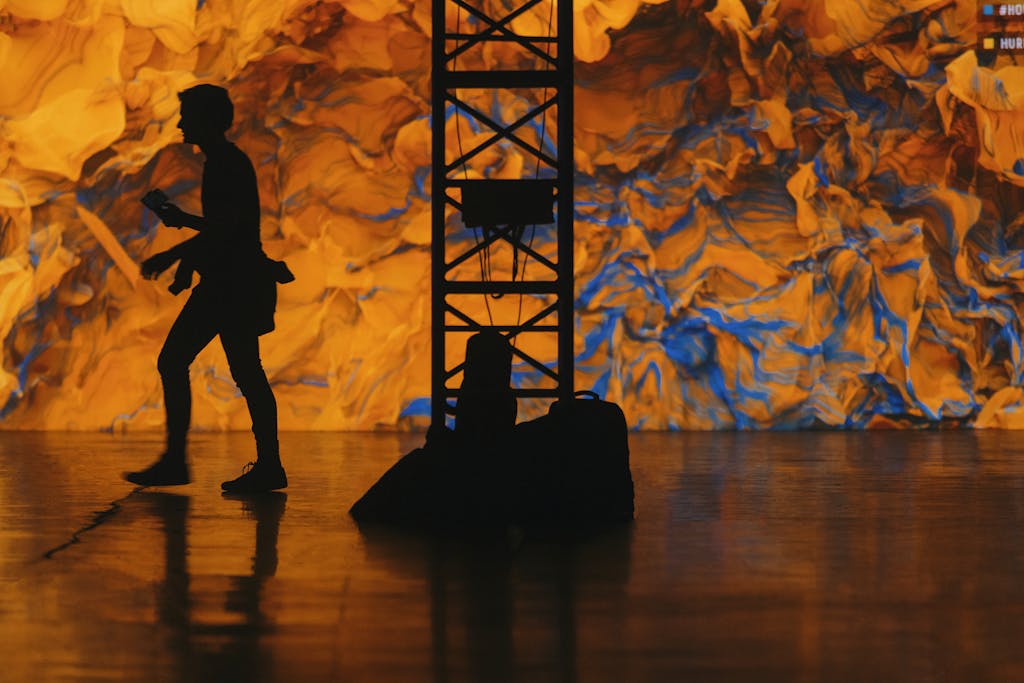
Although Clar’s anonymous city was doomed on repeat, Uproar from collective the Mill, used data visualization to show the resilience of Houstonians. Orange and blue swells battled each other for prominence, representing data sets from Hurricane Harvey and mentions of #HoustonStrong on social media, respectively.





